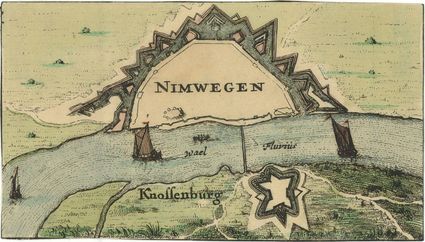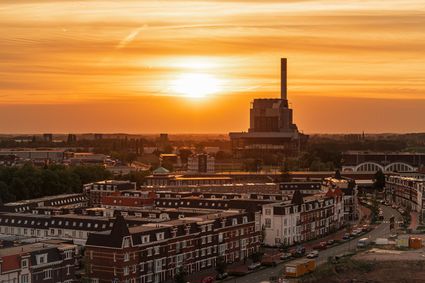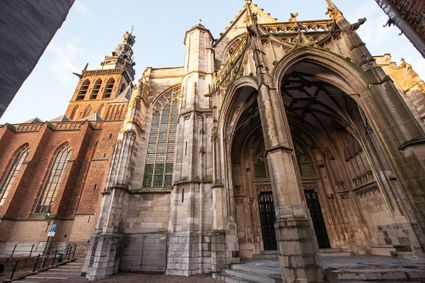Valkhof Castle and the giant’s tower
Nijmegen is bursting at the seams with historical stories, ranging from leading figures to ordinary people, from neighbourhoods to political events. The Canon of Nijmegen encompasses the most important stories about Nijmegen’s history. One of these stories tells the tale of Emperor Barbarossa, who added a giant tower to the castle at Valkhof in 1155.
The authority of the state slowly crumbled in the tenth and eleventh centuries, because of a long internal struggle within the former empire of Charlemagne and raids of the Normans. The royal palace (a non-defensible residence) at Valkhof fell into disrepair – until Emperor Frederik Barbarossa arrived.
1047: Rebellion and disrepair
In 1047, the Palace on the Valkhof was set on fire by counts and other nobles who were rebelling against the German king Henry III. Afterwards, Nijmegen lost its position as the administrative centre of the German kingdom, with monarchs passing it by for more than a century. We don’t know enough about the palace to potentially rebuild it: only the Nicolaas Chapel, built around 1030 and still present on the Valkhof today, survived the violence of 1047.
Nicolaas Chapel (also known as the Valkhof Chapel)

Nicolaas Chapel (also known as the Valkhof Chapel)
1155: Barbarossa and his gigantic tower
Emperor Frederik Barbarossa was the first monarch to show a clear interest in Nijmegen in the twelfth century. He visited Nijmegen several times and appointed a viscount as his liaison, giving him authority over the city’s administration and military defence. Barbarossa also rebuilt the neglected palace in a grand style, to honour himself and the German Empire. Through his efforts, the buildings that would be demolished in 1797-1798 would be built.
The most impressive part was the massive tower – dubbed “giant’s tower” – which rose above all other palatial buildings. In 1155, Emperor Barbarossa had a memorial stone placed to mark the rebuilding of the palace, which can be seen today in the Valkhof Museum. The inscription on the stone refers to the glorious past of the castle, which was supposedly founded by Julius Caesar. This doesn’t correspond with historical facts, but it does show that Emperor Barbarossa thought he and Julius Caesar were of equal historical importance.
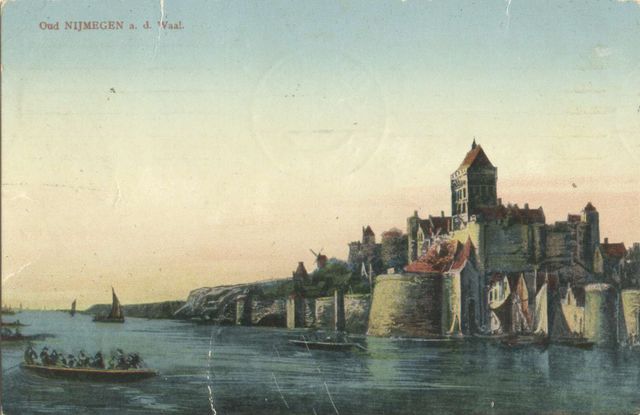 The Valkhof Castle and the giant’s tower, painted by Jan van Goyen (1641)
The Valkhof Castle and the giant’s tower, painted by Jan van Goyen (1641)
1155-1798: The Valkhof Castle and falconry
Of all the buildings built by Barbarossa, only the Barbarossa ruins – also known as the Maartenskapel, a remnant of the palace chapel – remains. Because of paintings and excavations, we have a clear picture what the Valkhof Castle looked like. The grounds of the castle were surrounded on all sides by walls, which were connected to the city walls – but the Valkhof Castle wasn’t part of the city itself. It was built as a royal residence and later became one of the many homes of the counts and dukes of Gelre, whose affairs, if they didn’t reside at the Valkhof, were observed by the viscount. Incidentally, the names Valkhof and Valkhof Castle only date from the fourteenth century or later, as it is a reference to the falconry practiced by the castle’s noble residents.
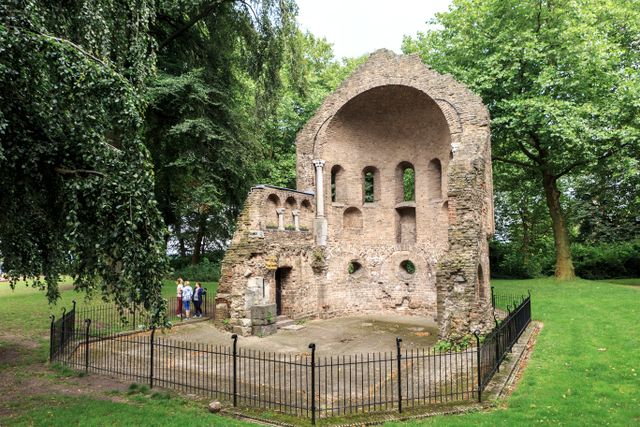 Maartenskapel (also known as the Barbarossa ruins)
Maartenskapel (also known as the Barbarossa ruins)
Immerse yourself in the rich history of the oldest city in the Netherlands, because Nijmegen has a lot of stories to tell you. Curious? You can read all about it in this historical timeline.

